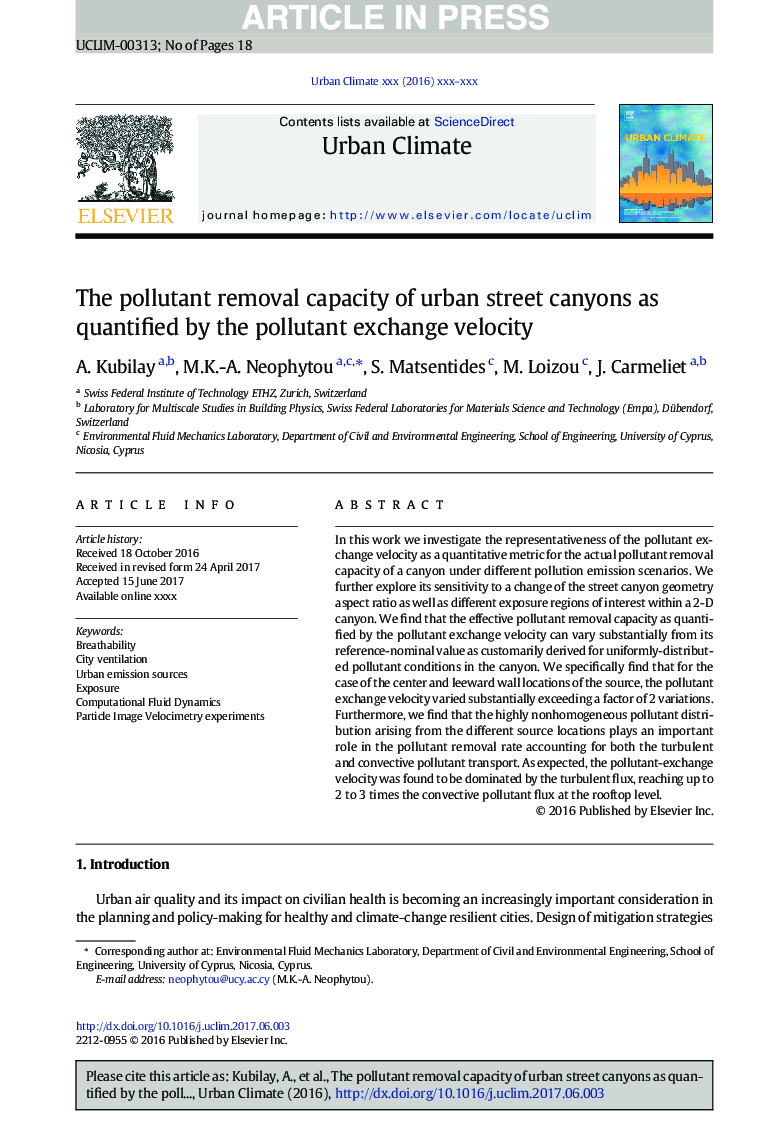| Article ID | Journal | Published Year | Pages | File Type |
|---|---|---|---|---|
| 4762357 | Urban Climate | 2017 | 18 Pages |
Abstract
In this work we investigate the representativeness of the pollutant exchange velocity as a quantitative metric for the actual pollutant removal capacity of a canyon under different pollution emission scenarios. We further explore its sensitivity to a change of the street canyon geometry aspect ratio as well as different exposure regions of interest within a 2-D canyon. We find that the effective pollutant removal capacity as quantified by the pollutant exchange velocity can vary substantially from its reference-nominal value as customarily derived for uniformly-distributed pollutant conditions in the canyon. We specifically find that for the case of the center and leeward wall locations of the source, the pollutant exchange velocity varied substantially exceeding a factor of 2 variations. Furthermore, we find that the highly nonhomogeneous pollutant distribution arising from the different source locations plays an important role in the pollutant removal rate accounting for both the turbulent and convective pollutant transport. As expected, the pollutant-exchange velocity was found to be dominated by the turbulent flux, reaching up to 2 to 3 times the convective pollutant flux at the rooftop level.
Related Topics
Physical Sciences and Engineering
Earth and Planetary Sciences
Earth and Planetary Sciences (General)
Authors
A. Kubilay, M.K.-A. Neophytou, S. Matsentides, M. Loizou, J. Carmeliet,
